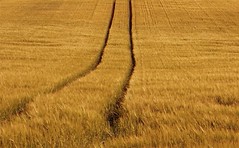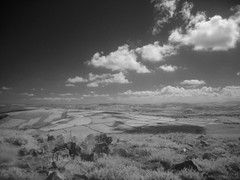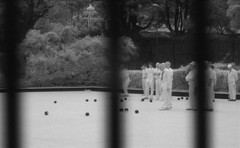I suppose I’m a little despondent about the digital IR results to date, but there again it’s early days. Seeing that the old Yashica will be fixed sometime in the near future, I wonder what results I’d get if I loaded it with XP2 and used the Hoya R72.
Thanks to Rob Novak for showing me why this idea won’t work…
From usenet: alt.photography
Rob Novak wrote:
XP2’s response drops greatly after 630nm, and has virtually no response to wavelengths below 660nm. The R72 filter’s transmittance curve doesn’t even start until 700nm, reaching peak transmittance at 750nm.





